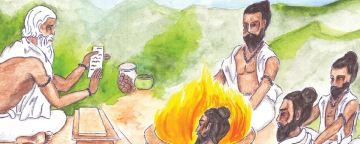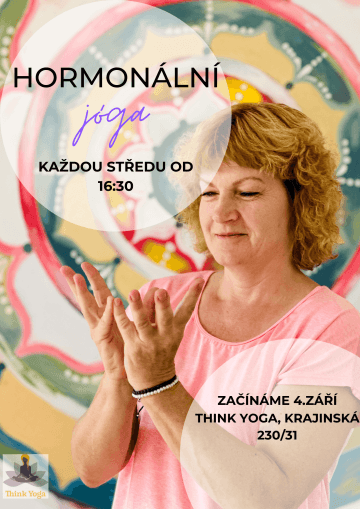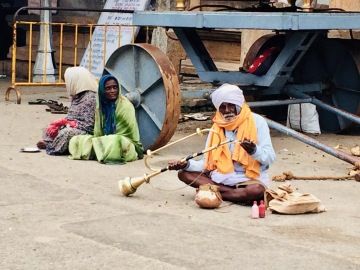The Yogic Psychology of the Varna system - Yogita Karpate
Leden 26, 2023

The Yogic Psychology of the Varna system
From the first article in this series, we know that the Indian caste system is
based on “Varna and Jaatis” and that this concept was put together by the Rishis. But how did they do it? Imagine a picture of an ancient school in India,called “Gurukuls.” Here the Rishis and some other teachers called “Aacharya” used to teach students. Various subjects were taught. The course design was aimed at personality development and not just passing information. Young kids were taught all essential basic subjects irrespective of their Jaatis. During this time the Rishis used to minutely observe every student and they used to advise them on what subjects to choose for specialization. This advice was based on the interests of the students and their mental, emotional, and physical capacities.
The students interested in research, teaching, or spiritual knowledge were put in Brahman Varna. These students became the Acharyas (teachers), priests, and Rishis of the future generation. They continued their profession as educationists and practiced religion. The students who were physically fit, competitive, dominant, and good in the administration were called Kshatriyas. These Kshatriyas became kings, rulers, warriors, and knights. The third category of students was interested in business, agriculture, and trade. These students were good in administration as well. They were the Vaishyas. They controlled the economy. The last bunch of students who were interested in arts, architecture, engineering, carpentry, gardening, and taking care of household work such as cleaning and maintenance was the Shudras. Shudras were a very important part of society, and they still are. The other three Varnas depend on them. They are the service providers in society.
The Dharma Sutras such as “Manusmriti” documented the physical, mental, and emotional attributes of these four Varnas. The next question is how were the Jaatis formed. People of the same Varnas were naturally attracted to each other. It is natural for a human to feel connected to another person who shares interests. People of similar nature can easily spend time together. So, as I said in the last article, Rishis proposed Varna and Jaati systems to maintain peace and harmony within society, they proposed that people of the same Varnas should marry and build families. This recommendation was intended to maintain peace in the family. The Rishis had a far sight. They could imagine that a society is a group of families. And peace within a family is necessary for a peaceful society.
Inter-caste marriages used to take place and Indian history are full of examples of Brahmans marrying Shudras, Kshatriyas marrying Brahmans, etc. We might think that this could have led to violence in society. It is too early to draw conclusions. The Rishis who proposed the Varna theory, also clarified that Varnas were not fixed! They can change based on age, circumstances in life, and the desires of an individual. There are again multiple examples in Indian history (also in the recent past), that individuals changed their Varnas during their lifetimes. This means a person born to Brahman parents had all rights to become a Kshatriya, and a Vaishya becoming a Brahman was also welcome. In nutshell, the change of Varnas was a common practice, and it still is!
What a beautiful and free culture was it! Such open-mindedness and
acceptance of all as equal and important were not seen in any other culture of that era. The entire culture collapsed as oppressive forces from inside and outside India started disturbing the society. With growing disturbance, fear crept into the hearts of citizens. And slowly the Varna system was lost. What remained is Jaati. In present-day India, the governance of the country is based on Jaatis. But as I said in the last article, Varna and Jaatis are linked to each other, one is incomplete without the other. The result is chaos and confusion within the mind of an individual, then in the families, and later in society.
Nejbližší akce
7.11. Škola jógy - akreditováný kurz instruktor jógy 200 hodin
Pro všechny zájemce o hlubší studium a praktikování jógy od března otevíráme víkendovou školy jógy. Na studium lze využít dotaci od ÚP.
7.11. Cesta ke stoji na rukách - handstand s Klárou Pokornou
Lákají tě obracené pozice? Dlouho je zkoušíš, ale není tam jistota ani grif? Pojď se naučit jak na to. Budeme ladit techniku, síliu, stabilitu i odvahu.
Proč musíš chodit na terapii červeným světlem
Hormony vládnou našim tělem i naší psychikou a pokud se jejich rovnováha vychýlí, může to s námi ženami pěkně zamávat. A jsme-li takhle vyosené, nejen, že naše zdraví hapruje ale napětí se přenáší do fungování rodiny i mezilidských vztahů. Co s tím? Poj'ďte na hormonálku.
Proč jít na hormonální jógu
Hormony vládnou našim tělem i naší psychikou a pokud se jejich rovnováha vychýlí, může to s námi ženami pěkně zamávat. A jsme-li takhle vyosené, nejen, že naše zdraví hapruje ale napětí se přenáší do fungování rodiny i mezilidských vztahů. Co s tím? Poj'ďte na hormonálku.
Jak posílit energetický okruh ledvin
Období zimy bývá pro spoustu lidí fyzicky i psychicky náročné. V tomto období bychom měli svou péči zaměřit na své ledviny, močový měchýř, lymfu a klouby. Jak na to?
The Yogic Psychology of the Varna system - Yogita Karpate
From the first article in this series, we know that the Indian caste system is based on “Varna and Jaatis” and that this concept was put together by the Rishis. But how did they do it?
Historical journey into the Indian Caste system - Yogita Karpate
Why are there so many Gods in the Hindu religion?Why are there so many casts in India?”
ASHTANGA V TĚHOTENSTVÍ
Přemýšlíte jak je to s praxí Ashtangy v době těhotenství. Cvičit nebo necvičit a pokud ano tak jak?
JÓGA PRO ŽENY – MANUÁL A SESTAVA
Představujeme vám zde sestavu jógových pozic, trvajících přibližně třicet minut. Sestava využívá prvků hatha jógy, jin jógy, kundaliní jógy a dalších systémů k podpoře hormonální rovnováhy a celkového zdraví a psychické pohody žen.









